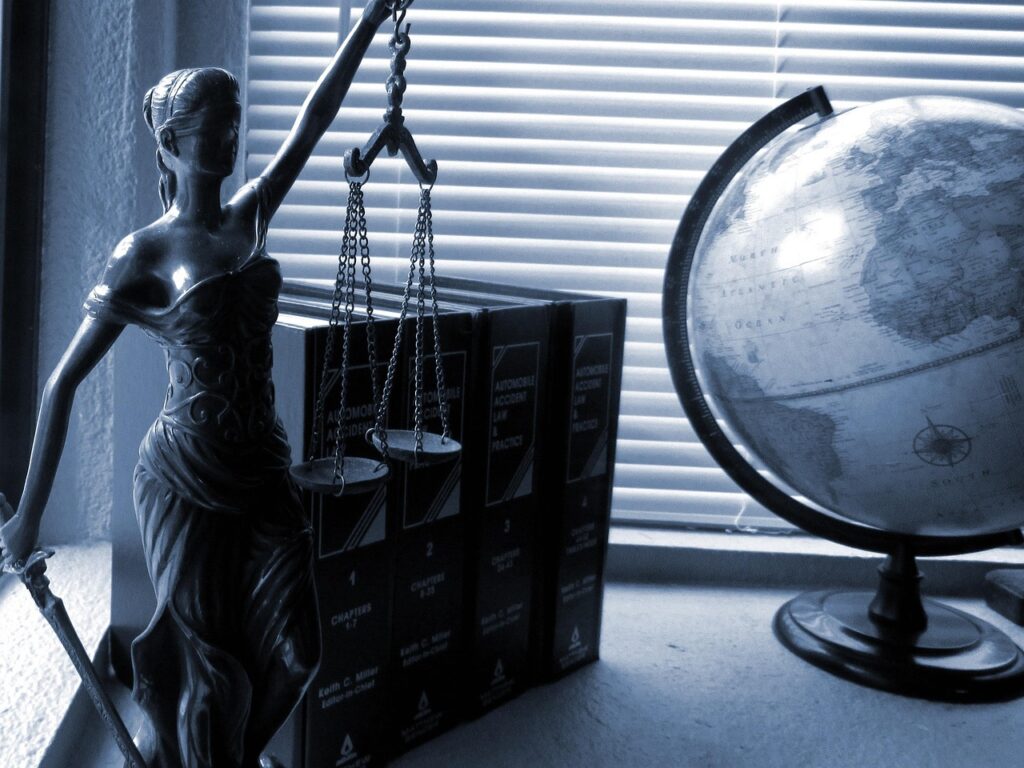Published on: 28th September 2025
Authored By: Misbah Sayyed
A.K.K. New Law Academy
ABSTRACT
Deaths occurring during police or judicial custody highlight critical breaches of individual human rights and call into question institutional accountability. According to data from the National Human Rights Commission (NHRC), numerous individuals die annually while in custody, often due to torture, medical neglect, or abuse of authority. This article examines the legal safeguards provided under the Indian Constitution and statutory law aimed at preventing custodial deaths. It also analyzes the accountability mechanisms involving the National Human Rights Commission (NHRC) and discusses both judicial and administrative reforms to enhance protection of people in custody.
INTRODUCTION
Custodial deaths constitute one of the most serious violations of fundamental human rights, particularly in a constitutional democracy like India. The arrest and detention process is governed by legal provisions intended to protect the dignity and life of individuals. However, recurring incidents of custodial death caused by torture, neglect, or abuse by authorities continue to challenge the system. Custodial deaths directly violate Article 21 of the Indian Constitution, which guarantees the right to life and personal liberty. Data from the National Human Rights Commission (NHRC) consistently reports a significant number of custodial deaths across India each year, highlighting the urgent need for comprehensive reforms and stricter accountability measures.
CUSTODIAL DEATHS IN INDIA: DEFINITION AND SCOPE
A custodial death refers to the demise of an individual while under the control of law enforcement authorities—whether in police custody, prison, or during transit. Such deaths often occur due to torture, abuse, medical neglect, or staged encounters, and directly contravene the constitutional right to life and liberty under Article 21.
Statistical Overview
According to data from the National Human Rights Commission (NHRC), India recorded 669 custodial deaths between April 1, 2017, and March 31, 2022, based on numbers provided by the Ministry of Home Affairs.
Year-wise Custodial Deaths:
- 2017-2018: 146 cases
- 2018-2019: 136 cases
- 2019-2020: 112 cases
- 2020-2021: 100 cases
- 2021-2022: 175 cases
During this five-year period (2017-2022), monetary compensation exceeding ₹5.8 crores was recommended in 201 cases, while disciplinary action was initiated in only a single case. This disparity highlights the significant gap between accountability and enforcement.
Regional data indicates that Gujarat recorded the highest number of custodial deaths, followed by Maharashtra, Uttar Pradesh, Tamil Nadu, and Bihar. Among union territories, Delhi reported the highest incidents with 29 deaths.
According to NHRC monthly statistics for January 2024, there were 11 cases of custodial death in police custody registered, with 6 disposed of, and a pendency of 265 cases as of that date.
LEGAL FRAMEWORK
1. Constitutional Provisions
The Indian Constitution provides several fundamental rights to protect individuals against arbitrary arrest, illegal detention, and abuse in custody. Articles 20(3), 21, and 22 are particularly pertinent in the context of custodial deaths, as these provisions safeguard the dignity, freedom, and legal rights of individuals in custody.
Article 20(3) – Protection against Self-Incrimination: “No person accused of any offense shall be compelled to be a witness against himself.”
This provision ensures that no person under arrest or in custody is compelled to make a confession or disclose information that could be used against them in a court of law.
Article 21 – Right to Life and Personal Liberty: “No person shall be deprived of his life or personal liberty except according to procedure established by law.”
This article forms the foundation of human rights protection in India. It has been interpreted by the courts to encompass the ‘right to live with human dignity,’ ‘protection against torture,’ and ‘humane treatment while in custody.’
Article 22 – Protection against Arrest and Detention:
Clauses (1) and (2) of Article 22 ensure certain rights for individuals arrested for regular offenses:
- The right to be informed of the grounds of arrest
- The right to consult and be defended by a legal practitioner
- The right to be produced before a magistrate within 24 hours
- The right not to be detained beyond 24 hours without judicial approval
Article 22, clauses (4) to (7), provide safeguards for preventive detention cases:
- Review by an advisory board for detention beyond three months
- Communication of detention grounds (except in public interest cases)
- The right to make representation against detention
2. Statutory Provisions
Bharatiya Nyaya Sanhita (BNS):
Section 120 – Voluntarily Causing Hurt to Extort Confession: Section 120(1) of the Bharatiya Nyaya Sanhita addresses the offense of voluntarily causing hurt or grievous hurt to extort a confession or compel the restoration of property. It covers the intentional infliction of harm to force someone to confess to a crime, provide information related to an offense, or return property.
Section 120(2) states that whoever voluntarily causes grievous hurt for any purpose referred to in subsection (1) shall be punished with imprisonment of either description for a term which may extend to ten years and shall also be liable to fine.
Section 103(1) – Punishment for Murder: “Whoever commits murder shall be punished with death or imprisonment for life, and shall also be liable to fine.”
Section 106(1) – Death by Rash or Negligent Act: This section deals with death caused by rash or negligent acts not amounting to culpable homicide. While it doesn’t specifically address custodial deaths, it can be relevant when death in custody occurs due to negligence.
Bharatiya Nagrik Suraksha Sanhita (BNSS):
Section 196 – Inquiry by Magistrate into Cause of Death: This section ensures thorough investigation into the cause of death, especially when there’s suspicion of foul play or when a person dies in custody. It provides a mechanism for independent oversight of such deaths by judicial officers.
3. National Human Rights Commission (NHRC)
The National Human Rights Commission, under the Protection of Human Rights Act, 1993, deals with violations of human rights, including custodial torture.
Section 12 of the Act outlines the Commission’s responsibilities in investigating human rights violations, intervening in court proceedings, and promoting human rights awareness. The following subsections directly affect custodial death incidents:
- 12(a) – Inquiry into custodial death suo moto or on complaint
- 12(b) – Empowers NHRC to intervene in any proceeding involving allegations of human rights violations pending before a court, with that court’s approval
- 12(c) – Allows NHRC to visit jails, police stations, and detention centers
NHRC Guidelines on Custodial Death
Key NHRC guidelines include:
- All custodial deaths must be reported to the Secretary General of the NHRC within 24 hours of the incident
- Magisterial Inquiry requirements:
- The inquiry should be conducted without undue delay
- The magistrate should visit the scene and record statements from witnesses, including family members of the deceased
- A public notice should be issued to inform potential witnesses, ensuring the victim’s relatives have a fair opportunity to participate.
4. International Framework
United Nations Convention Against Torture (UNCAT): India signed the UNCAT in 1997. This international human rights treaty aims to prevent torture, cruel, inhuman treatment, and punishment against humans worldwide. It obligates member states to criminalize torture, investigate and prosecute related offenses, and provide redress to victims. However, India has not yet ratified the UNCAT.
- D.K. Basu Guidelines on Arrest and Detention
In D.K. Basu v. State of West Bengal (1997), the Supreme Court recognized custodial torture or death as a direct violation of Article 21 of the Indian Constitution and laid down 11 guidelines for protecting human rights during arrest:
- Identification of police officers
- Preparation of arrest memo
- Informing a relative or friend
- Notification to next of kin
- Entry of arrest information
- Medical examination at the time of arrest
- Medical check-up every 48 hours
- Right to meet a lawyer during investigation
- Copy of memo to magistrate
- Police station diary maintenance
- Inspection by legal aid organizations and NHRC
These guidelines brought structural changes to how arrests and detentions are conducted.
ACCOUNTABILITY MECHANISMS
Accountability in custodial deaths requires that law enforcement authorities be held responsible for violations of law and human rights.
National Human Rights Commission (NHRC)
Under NHRC guidelines, it is mandatory to report custodial deaths within 24 hours and mandate investigation. The Commission has issued comprehensive guidelines regarding custodial deaths, though they are not legally binding.
Compensation Framework
In Nilabati Behera v. State of Orissa (1993), the Supreme Court ruled that monetary compensation may be awarded by courts under public law in cases of violation of a person’s right to life due to state action. This case established that financial accountability is an integral part of justice in custodial death cases.
Police Accountability
Police officers have both moral and legal duties to protect the rights and lives of people in their custody. They are legally obligated to report any incident of custodial death and have the responsibility to conduct investigations fairly and justly, showing no bias toward other officers involved in the incident.
REFORMS AND RECOMMENDATIONS
Implementation of D.K. Basu Guidelines
The implementation of the 11 guidelines established to regulate arrest and detention and prevent torture aims at reducing custodial torture and deaths. However, consistent enforcement remains a challenge.
NHRC Guidelines Enhancement
While NHRC guidelines on custodial deaths mandate reporting and investigation, they are not legally binding, and many state authorities delay or fail to comply. Making these guidelines legally enforceable could significantly improve accountability.
Ratification of UNCAT
India’s failure to ratify the United Nations Convention Against Torture reflects a gap in aligning domestic law with global human rights standards. Ratification would strengthen India’s commitment to preventing custodial violence.
Installation of CCTV Cameras
In Paramvir Singh Saini v. Baljit Singh (2020), the Supreme Court ruled that CCTV cameras should be installed in every police station across states and union territories. This measure promotes transparency and can serve as critical evidence in cases of abuse.
Additional Recommendations
- Mandatory Training: Regular human rights training for law enforcement personnel
- Independent Investigation: Establishment of independent investigation mechanisms for custodial deaths
- Legal Reforms: Enactment of comprehensive anti-torture legislation
- Victim Support: Enhanced support systems for families of custodial death victims
- Data Transparency: Regular publication of detailed statistics on custodial deaths and their outcomes
CONCLUSION
Custodial deaths represent a grave violation of fundamental human rights guaranteed under Article 21 of the Indian Constitution. Despite the existence of constitutional provisions and statutory safeguards designed to protect those in custody, custodial deaths continue to occur with alarming frequency.
The statistical evidence reveals a troubling pattern: while monetary compensation is occasionally awarded, meaningful disciplinary action against perpetrators remains rare. This disparity undermines public trust in the criminal justice system and perpetuates a culture of impunity.
Addressing this crisis requires a multi-pronged approach: strict implementation of existing legal provisions, ratification of international treaties like UNCAT, technological interventions such as mandatory CCTV installation, and comprehensive legal reforms. Only through sustained commitment to these measures can India hope to reduce custodial deaths, deliver justice to victims and their families, and restore public confidence in law enforcement and the criminal justice system.
The path forward demands not just legal reform but a fundamental shift in institutional culture—one that prioritizes human dignity and accountability at every level of the criminal justice system.
References
- Indulia B, “Custodial Torture in India: Intersection of Criminal Law and Constitutional Rights” SCC Times (March 23, 2024)
- Delhi HC, “Virginity Test on Female Accused Is ‘Sexist’, ‘Inhuman’ & ‘Unconstitutional'” NHRC (2023)
- “Examining Custodial Death: Challenges and Calls for Accountability” Drishti Judiciary
- The Constitution of India, 1950, Arts. 20(3), 21, 22
- The Bharatiya Nyaya Sanhita, 2023, ss. 120, 103(1), 106
- The Bharatiya Nagrik Suraksha Sanhita, 2023, s. 196
- Pillai RV, “Selected NHRC Guidelines” Ministry of Home Affairs (1993)
- The Protection of Human Rights Act, 1993
- “DK Basu vs State of West Bengal” LawBhoomi (April 16, 2025)
- Agrawal A, “Nilabati Behera vs State of Orissa” LawBhoomi (January 3, 2025)
- “Case Analysis: Paramvir Singh vs Baljit Singh (2020)” LawBhoomi (May 23, 2025)




